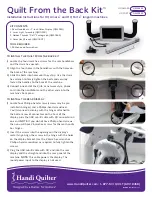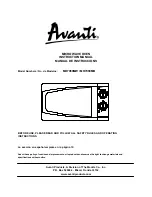
Operation, Safety and Installation Manual |
Li.ONESS Batteries
19
7. Battery use information
7.1 General instructions
•
Do not leave the battery in a SOC ≤50% for more
than 3 months.
•
Charging is not allowed at temperatures ≤0
o
C
(+32
o
F). The BMS will automatically reduce the
permitted charging current in low temperatures
(0
o
C to +10
o
C / +32
o
F to +50
o
F) and completely
stop any charging current at temperatures ≤0
o
C
(32
o
F).
7.2 Battery Function
•
Charging is performed automatically using
Inverter/Charger that is connected to the
Li.ONESS Power Unit / PBT unit (where
applicable), within specified temperature limits
(0
o
C to +45
o
C / +32
o
F to +113
o
F), only to a defined
voltage limit, with a current which is supplied
from the charger and regulated from the BMS.
The limits for Voltage, Temperature and Current
are set in the BMS without the intervention of the
user.
•
Discharging is performed within specified
temperature limits (-10
o
C to +45
o
C / +14
o
F to
+113
o
F), only to a defined voltage limit, with a
current defined from the needs of the load. The
limits for Voltage, Temperature and Current are
set in the BMS without the intervention of the
user.
Each Li.ONESS system is designed to meet the
power and energy requirements for a specific
application.
•
The battery’s operational limits are fully
controlled from the BMS which consists of three
types of electronic boards (the MAB, the CMU
and the secondary safety boards), contactors and
switches.
The BMS protects the battery from the following
dangerous failure modes:
•
Over - Under voltage
•
Over - charge / discharge
•
Over - Under temperature
•
Over - current IN and OUT
MAB board is the central board and one is placed
at each battery. In this board all monitored
signals from the sensors mounted on the battery
(temperature sensors, shunt resistor) and the
signals from the CMU boards (cell voltages and
temperatures) are gathered.
MAB is responsible for:
i. The management of the auto power off (only for
EOL voltage limit)
ii. The communication with the Inverter/Charger
iii. The communication with the Li.ONESS battery
modules
iv. The communication with all the CAN BUS
attached devices
Furthermore, MAB has digital I/Os which can give
to BMS more functions such as heating, cooling
etc. in case it is required.
v. Connection to GLOCAL (Systems Sunlight Cloud
Platform), through GSM or Wi-Fi, to monitor the
performance and editing of the settings
(if it is needed / requested).
CMU boards monitor the cell voltage,
temperature, insulation resistance and they also
perform the cells’ balancing.
PBT boards are responsible to control the
contactor installed at each Li.ONESS module.
The PBT functionality gives the ability to
disconnect one or more parallel connected
Li.ONESS battery modules (in case of failure) from
the system without losing the complete Li.ONESS
system.
The disconnection of a parallel module can be
performed manually via the BMS tool or remotely
by Systems Sunlight or by the customer via the
cloud.
Example
If there is a faulty Li.ONESS battery module (i.e.
communication error, low performance cell,
etc.) the system will raise an alarm on Systems
Sunlight’s cloud platform (GLOCAL). E-mail
notification will be sent directly to Systems
EN
















































